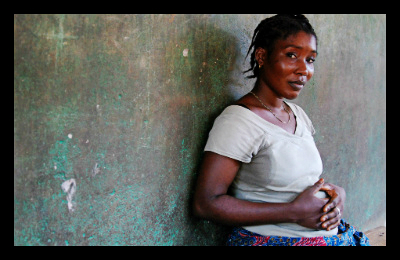Maternal Mortality in Sierra Leone

Sierra Leone, a small country on the West African coast, gained independence from Britain in 1961. Ranked as the least developed country in the world in 2007, poverty and maternal mortality are some of the main problems that Sierra Leone faces today.
As of 2010, Sierra Leone had a maternal mortality rate (MMR) of 857 per 100,000 live births, making it one of the most dangerous countries in the world for women to give birth. This high maternal mortality rate was mainly due to hemorrhages, a cause of 26 percent of maternal deaths in sub-Saharan Africa. Since Sierra Leone only collects annually one-forth of the blood it needs for transfusions, hemorrhages are a major danger during childbirth. Other contributors to the high MMR are obstructed labor, anemia and toxemia during pregnancy.
Approximately 73 percent of births in Sierra Leone occur in rural areas, where access to health care during pregnancy is normally limited and maternal healthcare does not have as many beneficial outcomes compared to healthcare in urban areas. Many women who need cesarean sections do not receive them, due to the fact that even if a birth attendant is present, many birth attendants are actually aides who do not have the qualifications to perform a cesarean section or to do other tasks that are necessary to help the mothers survive.
Maternal mortality is also prevalent because of a lack of sanitation. Traditional practices also play a cause, since many communities choose home-births instead of modern health care facilities.
Another cause of maternal mortality in Sierra Leone is the high rate of adolescent marriages. Forty-four percent of girls in Sierra Leone marry before they reach the age of 18. Adolescents are more likely to suffer during pregnancy and childbirth, as their bodies are normally not developed enough to carry a baby and deliver safely.
Contraceptive use is also not widespread in Sierra Leone, contributing to Sierra Leone’s high MMR. Only about 7 percent of women use contraceptives, leading to a high fertility rate of 5 children per woman. This contributes to more children and more pregnancy related complications.
In 2010, in order to reduce the MMR and the high rate of children’s deaths in Sierra Leone—almost one-third of children died before they reached their fifth birthday as of 2007—the government of Sierra Leone implemented a policy that would provide free healthcare for pregnant and lactating women and for children under the age of five. This policy led to increased amounts of antenatal care visits immediately after it was introduced, but antenatal care visits decreased once again a few months later, and the policy was not as impactful as hoped.
Therefore, despite the 2010 healthcare act, Sierra Leone is still facing high rates of maternal mortality and a high rate of deaths among children under 5. However, there is hope. Thanks to a now thriving mining industry and a GDP that is growing, Sierra Leone’s economy is looking up. Hopefully, these economic benefits can be invested in the healthcare industry and can help contribute to the supplies and care that pregnant women and their children need.
– Ashrita Rau
Sources: The Borgen Project 1, The Borgen Project 2, Amnesty International, UNFPA, WHO 1, WHO 2, The Guardian, ICRW
Photo: Flickr
